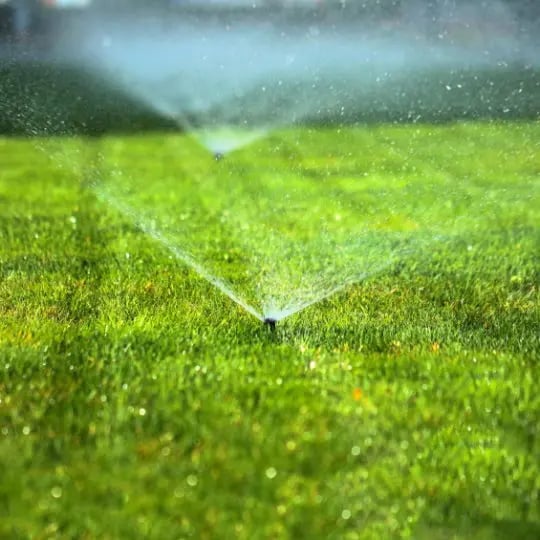How to Prevent Lawn Disease

Lawn disease comes in many forms and can plague your yard, rendering it unattractive and unhealthy. Learn here about the most common diseases and how to prevent future outbreaks from damaging your grass.
- Fertilize: Fertilizing your lawn regularly with a nitrogen-based fertilizer strengthens grass roots before the soil freezes, equipping it to defend itself from disease during the winter. Use a nitrogen-based fertilizer is an effective method in preventing common lawn diseases like brown spot, dollar spot, lawn rust, red thread, fairy ring, stripe smut, and snow mold.
- Aerate: Soil aeration is the process of puncturing your lawn in order to remove the top layer of soil and spores. Aeration improves drainage, reduces puddles, and makes water and nutrients more accessible to your grass. The nutrients keep your lawn strong, eliminating diseases such as snow mold, red thread, dollar spot, brown patch, rust, pythium blight, leaf spot, fairy ring, slime mold, stripe smut, summer patch, and spring dead spot.
- Water in the morning: Watering too late in the day leaves your lawn wet longer and leaves it more susceptible to fungal diseases and weeds. Apply 1” of water once a week between 6am and 10am to give your grass blade time to dry during the day. Watering in the morning can prevent red thread, brown patch, dollar spot, rust, pythium blight, lead spot, anthracnose, spring dead spot, and slime mold.
- Dethatch: Dethatching is the removal of the dead stems and built-up organic matter on your lawn. Thatch locks in moisture, which can smother it and cause disease. Dethatching is necessary for preventing red thread, brown patch, dollar spot, pythium blight, fairy ring, stripe smut, pink snow mold, snow mold, summer patch, and leaf spot.
- Proper mowing: Mowing your lawn too short makes grass more susceptible to disease, so use a high (3” to 4”) mowing setting. Mowing often varies depending on grass type and the time of year, but it’s a good rule of thumb to remove no more than 1/3 of the grass blade. Mowing often and at the right height can help ward off rust, anthracnose, snow mold, summer patch, and leaf spot.
- Apply Fungicide: Apply a lawn fungicide in order to control existing lawn diseases or to help prevent one from returning. It can be applied at any time on any lawn types, but be sure to read the label carefully. Depending on the severity of a disease, this process is sometimes better left to professionals. Fungicide can prevent brown patch, dollar spot, red thread, rust, pythium blight, leaf spot, pink snow mold, snow mold, slime mold, spring dead spot, stripe smut, and summer patch.
Contact us
For further assistance in preventing lawn disease, contact Green Lawn Fertilizing at 855-469-0692 and ask about our fungicide program. Call us today for more tips and tricks to keep your grass healthy.